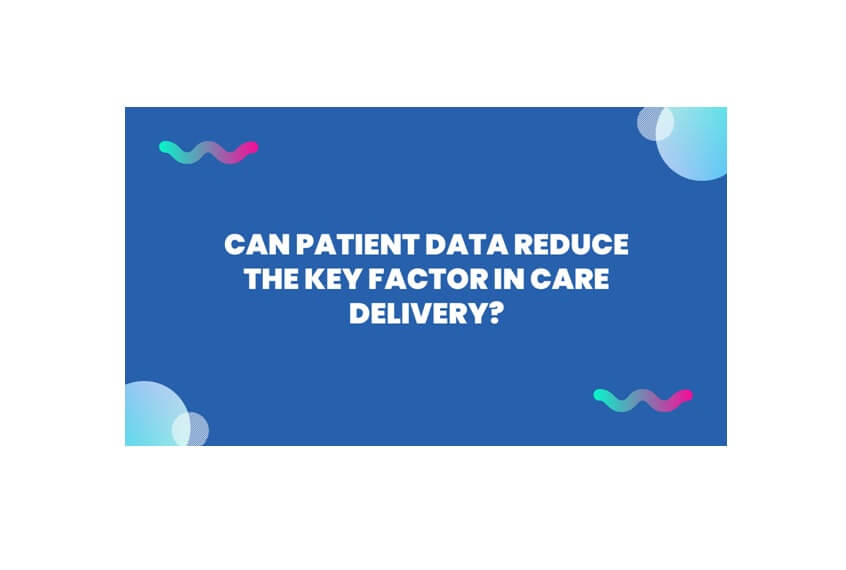Patient data is very important for healthcare providers and patients as well. In simple terms, without patient data healthcare providers aren’t able to provide proper care.
For instance, there is an emergency case of a patient having a heart attack. So for treatment, the healthcare providers will take the necessary steps.
But before that, they need the patient’s data and history of medical treatment. And also need to conduct some ground tests like blood groups, blood pressure reports, pulse reports and so on.
However, these things are normal and are not key problems anymore. The only issue occurring here is handling the patient’s data and accessing it whenever it wants.
Still many medical clinics and hospitals practice the traditional method of handling patient data. Which makes care delivery complex and unsatisfactory.
However, there are still many keys to unlocking the solutions for improving medical care delivery. And technology can be a helping hand in it.
So, Let’s understand which modern solutions thus technology has brought to decode the care issues.
How can data help healthcare professionals to provide effective care delivery?
With modern solutions, the availability of healthcare is spread to a wider range, even though in rural areas the care facilities are now available easily.
But, there are still some points where healthcare providers lack in the delivery of proper care.
The issues are faced from both sides from the patients and healthcare professionals as well.
Let’s understand the issues here and then we’ll discuss the solutions.
Issues faced by doctors and patients:
We will discuss the major issues which are faced by doctors and patients due to the low access to the data.
- Healthcare professionals are facing issues in accessing the data. Doctors are not able to deliver the proper care when needed.
- Patients hassle for finding the right healthcare clinic nearby them.
- Patients need to make numerous document files for handling their medical history.
- Doctors are required to note down the medical details of patients such as payment details, last check-ups, and so on manually.
- Sometimes it is difficult for patients to keep all the prescription data in one place.
- Doctors can’t observe every patient 24*7. However, doctors need real-time symptom data to monitor the patients consistently which can be accessed from anywhere anytime.
Tech-solutions:
Technology has always been the supportive pillar of the healthcare ecosystem, with its creative and advanced tools and software handling healthcare data has become easier.
#1 EHR(electronic health records):
The patient’s data can be stored by integrating the EHR into healthcare tools such as telemedicine apps.
The data of patients such as medical history and prescriptions can be stored in the app and accessed with a few taps in a minute.
This makes it easy for doctors to check the patient’s data whenever they are consulting the patients and shared the prescriptions over there.
#2 AI-based tools for auto-billing, patients discharge, and other workflows:
AI(artificial intelligence) is efficient in reducing human efforts and has the potential to automate. Doctors can easily analyze the patient’s data for better conclusions.
However, admin staff can also work efficiently using AI-driven automation tools.
It reduces the time and energy of admin staff in handling patient data and other workflows.
#3 IoT Devices:
A remote patient monitoring tool is from around the ’90s. But it recently came into existence as the availability of mobile devices increased.
IoT-based devices such as remote patient monitoring tools provide real-time data to patients and are easily shared with doctors. It monitors the symptoms of patients such as heart rate, pulse rate, and so on.

Although, this technology can be integrated into one place and used for patient care. Software such as patient management software is proven to be effective in care delivery.
What is lacking when it comes to the management of patient data?
There is still a gap in securing patient data. Which is needed to fulfil. The patient data is important to secure.
“The United States shows 1,244 data breaches and had 446.5 million records exposed in 2018.” And data breaches of 1.4 billion were recorded in the first six months of 2019 according to the Varonis report.
The stolen data can be used to make false medical claims. However, every technology has a risk factor associated with it.
Whenever there is a new technological solution introduced to the world. People find thousands of ways to break it.
As a result, Health-tech companies need to fill the gap by following proper healthcare compliance which many fail to implement successfully.
To sum it up:
Although using patient data can make it easy to maximize the care delivery performance and experience level of patients.
Additionally, creating easy and secure pathways for patients to share data as well as for providers to collect data is required to expand the breadth and quality of sharing using technological tools.


